Increased sensing accuracy with signal conditioning
Signal conditioning provides a distinct advantage because it enhances both performance and measurement accuracy
BY BRETT BURGER
National Instruments
Austin, TX
http://www.ni.com
For many real-world applications, you must measure environmental or structural parameters, such as temperature or vibration, with sensors. These sensors, in turn, require signal conditioning before a data acquisition device can effectively and accurately measure the signal. Signal conditioning provides a distinct advantage over data acquisition devices alone because it enhances both the performance and measurement accuracy of data acquisition systems.
Data acquisition systems
With the speed and accuracy of modern data acquisition devices (see Fig. 1 ), it is easy to overlook the need for signal conditioning. While plug-in DAQ devices specifically and accurately measure voltage signals, voltage is only one of many I/O types required by modern measurement and automation applications.
Many of today’s data acquisition systems must also measure signals from sensors that detect physical, chemical, or mechanical phenomena. While several of these sensors, such as RTDs and strain gauges, must have signal conditioning to return any measurement, they all require conditioning to return accurate measurements.
While data acquisition devices have become progressively more intricate, the basic principles of data acquisition remain the same you must connect to the signal, apply the necessary signal conditioning, digitize the signal, and display the data. With this in mind, the three vital components of all data acquisition systems are as follows:
• Signal conditioning (to condition the signal/sensor).
• Data acquisition device (to digitize the conditioned signal).
• Software (to analyze, record, and display the acquired signal data).
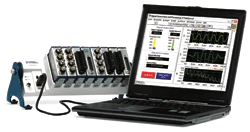
Fig. 1. DAQ system components.
The component most often forgotten, yet fundamentally important, is signal conditioning. A large portion of the world’s measurable signals must be detected with sensors, most of which require some sort of signal conditioning for the data acquisition device to accurately read them. Thus, a data acquisition system must not only incorporate the digitizer and application software, but also tightly integrated signal-conditioning hardware.
Improving accuracy
Data acquisition devices are used in a variety of applications. In laboratories, in field services, and on manufacturing plant floors, these devices act as general-purpose measurement tools well suited for measuring voltage signals.
However, for many real-world applications, you must measure environmental or structural parameters, such as temperature or vibration, with sensors. These sensors, in turn, require signal conditioning before a data acquisition device can effectively and accurately measure the signal. Signal conditioning provides a distinct advantage over data acquisition devices alone because it enhances both the performance and measurement quality of data acquisition systems.
To illustrate the necessity of signal conditioning, consider a thermocouple. To accurately measure thermocouple signals, you must provide amplification, filtering, and cold-junction compensation.
Amplification is required because of the small magnitude of the signal, and you must apply it as close to the thermocouple as possible to increase your signal-to-noise ratio. While this amplification help reduces the noise effect on your signal, you must also provide filtering to eliminate environmental noise from power lines and other electric devices.
Cold-junction compensation is also necessary to offset any temperature difference that exists between the measurement junction of the thermocouple and the junction with the data acquisition device. The net effect of this signal conditioning is dramatically improved accuracy, as shown in Fig. 2 .
The graph compares thermocouple measurements taken at 25°C using a National Instruments SCXI-1112 thermocouple signal-conditioning module and an SCB-68, a screw terminal connector block with a temperature sensor for cold-junction compensation (see Fig. 3 ). The SCXI-1112 module achieved an accuracy of 0.3°C, compared to 5.0°C accuracy with the SCB-68 (see Fig. 4 ). Thus, the SCXI-1112 signal-conditioning module provides a thermocouple measurement with accuracy more than 10 times greater than that of the terminal block because of preamplification, low-pass filtering, and a more accurate temperature sensor.

Fig. 2. SCB-68 screw-terminal connector block.
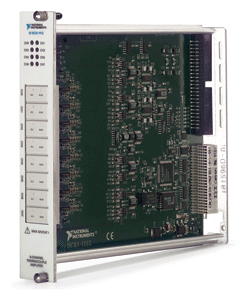
Fig. 3. SCXI-1112 thermocouple signal conditioner.
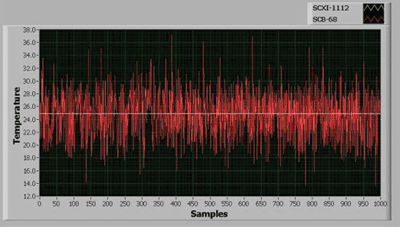
Fig. 4. This accuracy comparison shows that the SCXI-1112 signal-conditioning module delivered ±0.3°C accuracy compared to ±5.0°C with the SCB-68 terminal block using a calibrated input.
There are several critical signal conditioning technologies that enhance the accuracy and performance of the data acquisition system:
Amplification. Amplifiers improve the accuracy and sensitivity of your small signal measurements by boosting the amplitude of the input signal to better match the input voltage range of the digitizer, thereby increasing the resolution and sensitivity of the measurement. While many data acquisition devices include onboard amplifiers for this reason, many sensors, such as thermocouples, require more amplification than a data acquisition device alone can provide. Using signal conditioning to amplify the signal near the source also reduces the environmental noise effect on your measurement.Attenuation. Attenuation diminishes your input signal’s amplitude to fall within the digitizer’s input range so you can measure high-voltage signals with your data acquisition system. Isolation. Signal-conditioning devices with isolation pass input signals to the measurement device by using transformer, optical, or capacitive coupling techniques rather than a physical connection. Isolation prevents ground loops. With isolation, you can measure signals with high common-mode voltages while protecting the expensive measurement equipment in your data acquisition system from any high-voltage surges that may occur.Filtering. Filtering improves your measurement accuracy by removing unwanted frequency components from your signal. In addition to eliminating noise from your measurement, filtering prevents signal aliasing (a phenomenon that occurs when frequencies higher than half of the sampling rate appear in your measured signal, corrupting your measurement).• Excitation Many sensors, such as RTDs, strain gages, and accelerometers, require some form of power to return a measurement. Excitation provides this power, in the form of either voltage or current, so you can use these types of sensors in your data acquisition system. Calibration. Calibration improves your measurement accuracy by adjusting your data acquisition system to compensate for any imbalances in your sensor or measurement hardware. For example, strain gage measurements require both null (or zero) and shunt (or gain) calibrations to ensure accurate linearization.Cold-junction compensation. Thermocouples measure temperature as the difference in voltage between two dissimilar metals. Based on this concept, another voltage is generated at the connection between the thermocouple and connector (or terminal) block of your data acquisition device. Cold-junction compensation improves your temperature measurement accuracy by providing the temperature at this connection, which you can then subtract from the reading. Simultaneous sampling. When you must measure two or more signals at the same instant in time, you need simultaneous sampling. Using signal conditioning with track-and-hold circuitry can be a much more cost-effective simultaneous sampling solution than purchasing a digitizer for each channel. Typical applications that might require simultaneous sampling include vibration measurements and phase-difference measurements (see Table 1 ).
DAQ system considerations
The number of available data acquisition system devices and options can make the process of choosing the proper components very complex. But this process is crucial because the type of components you use can have a dramatic effect on the overall performance and accuracy of your system. Couple this with the fact that your development and time to first measurement also can be drastically impacted, and it quickly becomes evident that component choice is one of your most important decisions in selecting the right data acquisition system.
There are nine essential considerations for your data acquisition system that can help you take full advantage of the latest advances in computer-based data acquisition.
Breadth of signal types. Selecting signal conditioning hardware that accepts a large breadth of signal types is critical to protecting your data acquisition system investment. In addition, the ability to incorporate all of these measurements into a single data acquisition system can dramatically reduce your development time because you can focus on implementing your tests rather than learning and configuring multiple measurement systems. To illustrate, consider an application where you must validate the design of an automobile engine. To accurately characterize the engine, you must measure a variety of signal types including temperature, vibration, frequency (rpm), and torque each with unique conditioning requirements. Traditionally, this meant that you needed an individual stand-alone instrument or custom data acquisition device for each type of measurement, which required you to configure multiple devices. With modern, high-performance signal-conditioning hardware, you can easily incorporate all of these measurements into a single, rugged chassis and configure them from a single software interface, such as NI-DAQ. This capability reduces your current application’s development time and cost while still protecting your data acquisition system investment and providing the flexibility to address future applications.Connectivity. With the diverse range of sensor connectors available, your signal-conditioning hardware must not only offer a variety of connectivity options but also, more importantly, the specific options you need. Whether you are using a strain gage with a D-Sub connector or an accelerometer with a BNC interface, your signal-conditioning platform should offer easy connection to all of your sensors to simplify your system setup. Some signal-conditioning hardware offers direct connectivity options on a per-channel basis so you can match each channel to the required connector. With sensor-specific connectors, you can easily remove and replace individual sensors while your data acquisition system is still running, making it easier to troubleshoot your system and minimizing system downtime. On the other hand, the most flexible type of connector is the screw terminal. Consider a data acquisition system with screw terminals for voltage and current measurements or if your sensor connection type is likely to change often. When you can connect your data acquisition system to any sensor, you greatly enhance your measurement capabilities.Expandability. As your test evolves and your measurement requirements change, you must have a data acquisition system that provides the flexibility to expand and change with your application. Expanding your data acquisition system should not require a complete overhaul of your signal-conditioning platform. Using modular signal-conditioning hardware, you can very quickly increase the number and variety of signals in your system by simply plugging in another module. This feature protects your data acquisition system investment because you can expand your channel count in a matter of minutes, dramatically reducing the time before your modified system is up and running. This flexibility, in turn, reduces the total cost of ownership for your data acquisition system.Integration. To realize the full productivity potential and value of your data acquisition system, all of its components must integrate seamlessly. Specifically, your signal-conditioning hardware should be capable of incorporating mixed-signal types in a single system, while still maintaining quick and easy connection to your data acquisition device. With this capability, you can dramatically reduce your setup time. Furthermore, by selecting signal-conditioning hardware that tightly integrates with your data acquisition device, you can easily upgrade the speed and resolution of your entire data acquisition system as your application requirements evolve by simply upgrading the data acquisition device. Thus, tightly integrated signal-conditioning hardware can reduce both current and future system development costs.Packaging. Your signal-conditioning hardware packaging is most often dictated by the size and environmental constraints of your application. Because space is at a premium on most laboratory and test floors, it is important to choose a data acquisition system that packs more channels into less space. Signal conditioning with high-channel density minimizes the space requirement of your data acquisition system while reducing per-channel cost. In portable applications, your signal-conditioning hardware must be compact and lightweight, while still offering a high level of performance and functionality. Alternatively, applications running in harsh, industrial environments require signal conditioning with rugged mechanical packaging. To operate effectively in such extreme environments, hardware must be capable of enduring a wide operating temperature range in addition to severe shock and vibration.Software. A large portion of the total cost of a test and measurement system is application development. To keep these costs to a minimum, you must use software tools that maximize productivity. In particular, driver software should provide a single interface for configuring and testing your entire data acquisition system, while also tightly integrating with your application development environment (ADE). Driver software should also provide the ability to scale and calibrate your sensor measurements. These capabilities dramatically reduce your overall development time and cost because you can quickly incorporate new sensor measurements into your data acquisition application.Isolation. Isolation can dramatically increase the overall value of your data acquisition system by improving overall safety, accuracy, and performance. By creating an insulation barrier, isolation permits the ground reference of the input and output of a measurement device to be at different voltage levels, protecting both the operator and equipment from any transient voltage spikes. Isolation also improves system accuracy by physically preventing ground-loop currents, a common source of measurement noise and inaccuracy; ground loops result when a data acquisition system and its input signal have separate grounds at different potentials. Lastly, isolation improves the performance of your data acquisition system by increasing its common-mode rejection ratio (CMRR), or ability to reject common-mode voltage. Common-mode voltage, another frequent source of error, is voltage that is present on both the positive and negative input of your measurement device, but it is not part of the signal you wish to measure. While isolated devices are often more expensive, their additional cost is easily justified when you consider the amount of troubleshooting time isolation saves you by eliminating hard-to-find sources of error, such as ground loops and common-mode voltage. Calibration. One of the most critical technologies that a signal-conditioning system should incorporate is the ability to be easily and accurately calibrated. Most measurement devices are calibrated at the factory, but the accuracy immediately starts to drift with time and temperature changes. To make the most accurate measurements possible, you must periodically calibrate your entire data acquisition system. If your system has precision onboard voltage references, you can adjust your measurement system to compensate for temperature changes. In addition, you must have access to external calibration services to keep your system performing up to the manufacturer’s specifications year after year. It is very important to understand the calibration capabilities and requirements for any signal-conditioning system under consideration because this is the only way to ensure that your investment contains the technology you need to make accurate and reliable measurements. Switching. In today’s demanding test environments, the ability to route signals easily throughout your measurement system is a technology that can lead to huge improvements in test times. As an example, consider a case where you must subject a unit under test (UUT) to four separate measurements in the testing process. Without the proper technology, you must reconnect the UUT to each different measurement device for each test. With state-of-the art switching technology, not only can you route the UUT leads automatically to each measurement device in turn, but also you can test several UUTs at the same time. You thus achieve more efficient use of your test equipment, faster test times, and less user intervention. Your selection of a signal-conditioning system that offers this technology can have a huge impact on the overall performance and cost of your system.Bandwidth. Bandwidth is an often overlooked but extremely important technology to consider when selecting a signal-conditioning system. Modern signal-conditioning hardware should have the bandwidth to handle data throughput from a high-channel-count system and to accommodate any future growth in channel count. System bandwidth is typically expressed in samples/second (Hz), and often reaches several hundred kilohertz for large systems even at modest acquisition rates.
Overall, signal conditioning defines the measurement capabilities and is a critical component of any complete data acquisition system. Furthermore, signal conditioning is required for accurate sensor measurements. To protect your data acquisition system investment, you must invest in modular, easily expandable signal-conditioning hardware that accepts a wide variety of signal types and offers a broad range of connectivity options, while still meeting your size and environmental constraints and tightly integrating with your development software and data acquisition device.
The types of hardware listed in Table 2 are examples of National Instruments offerings. They serves as an example of the types of choices available to users when selecting signal-conditioning hardware capable of interfacing a signal or sensor to a data acquisition system.
Front-end signal conditioning (SCXI)
SCXI is a signal-conditioning and data acquisition system for PC-based instrumentation applications (see Fig. 5 ). It consists of a shielded chassis that houses a combination of signal-conditioning input and output modules that perform a variety of signal-conditioning functions. You can connect many different types of transducers, including thermocouples, directly to the modules. The system is a high-performance USB plug-and-play data acquisition system, and it can also operate as a front-end signal-conditioning system for PCI, PXI, or PCMCIA data acquisition devices.
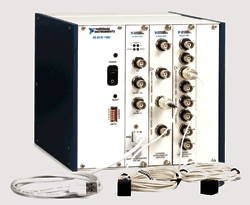
Fig. 5. SCXI signal-conditioning hardware.
Integrated DAQ and signal conditioning (SC series)
SC Series data acquisition (DAQ) devices (see Fig. 6) expand the measurement capability of PXI by integrating measurement-specific signal conditioning onto a 16-bit PXI data acquisition device. With this tight integration of signal-conditioning and data-acquisition functionality, the SC Series delivers high-performance sensor-specific measurements at a lower cost per channel than leading solutions, such as SCXI DAQ systems, for low- to medium-channel counts.
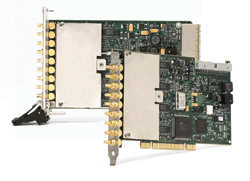
Fig. 6. SC series hardware.
Distributed DAQ with signal conditioning
CompactDAQ (see Fig. 7 ) and CompactRIO are modular embedded control and distributed I/O systems for measurement, control, and data logging. They are intended for applications that demand industrial-grade hardware with easy installation and configuration. Both systems feature built-in signal conditioning for direct connectivity to sensors and actuators. Modules are available for connecting to thermocouples, RTDs, strain gauges, 4 to 20-mA signals, high-voltage sources, and many other signals.
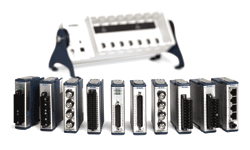
Fig. 7. CompactDAQ distributed I/O hardware.
They offer embedded control by running LabVIEW Real-Time on a dedicated embedded processor, and can connect to a PC through a variety of industrial buses (Ethernet, serial, CAN, and Foundation Fieldbus). They can operate in harsh environments with electromagnetic noise, wide temperature ranges, and high shock and vibration. ■
Table 1. Signal-Conditioning Requirements of Common Sensors
Table 2. Signal-Conditioning Hardware Selection Guide
Advertisement
Learn more about National Instruments





